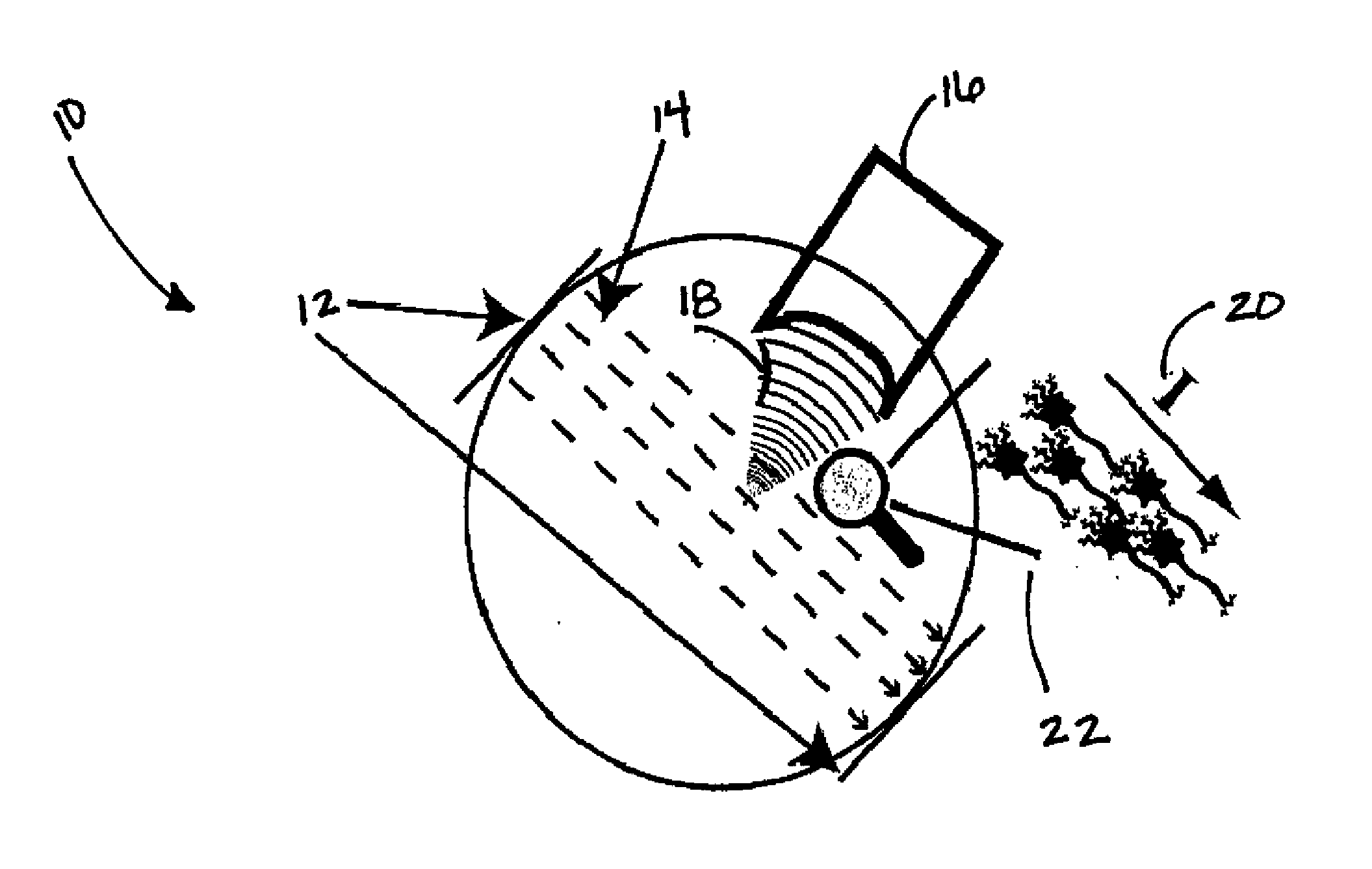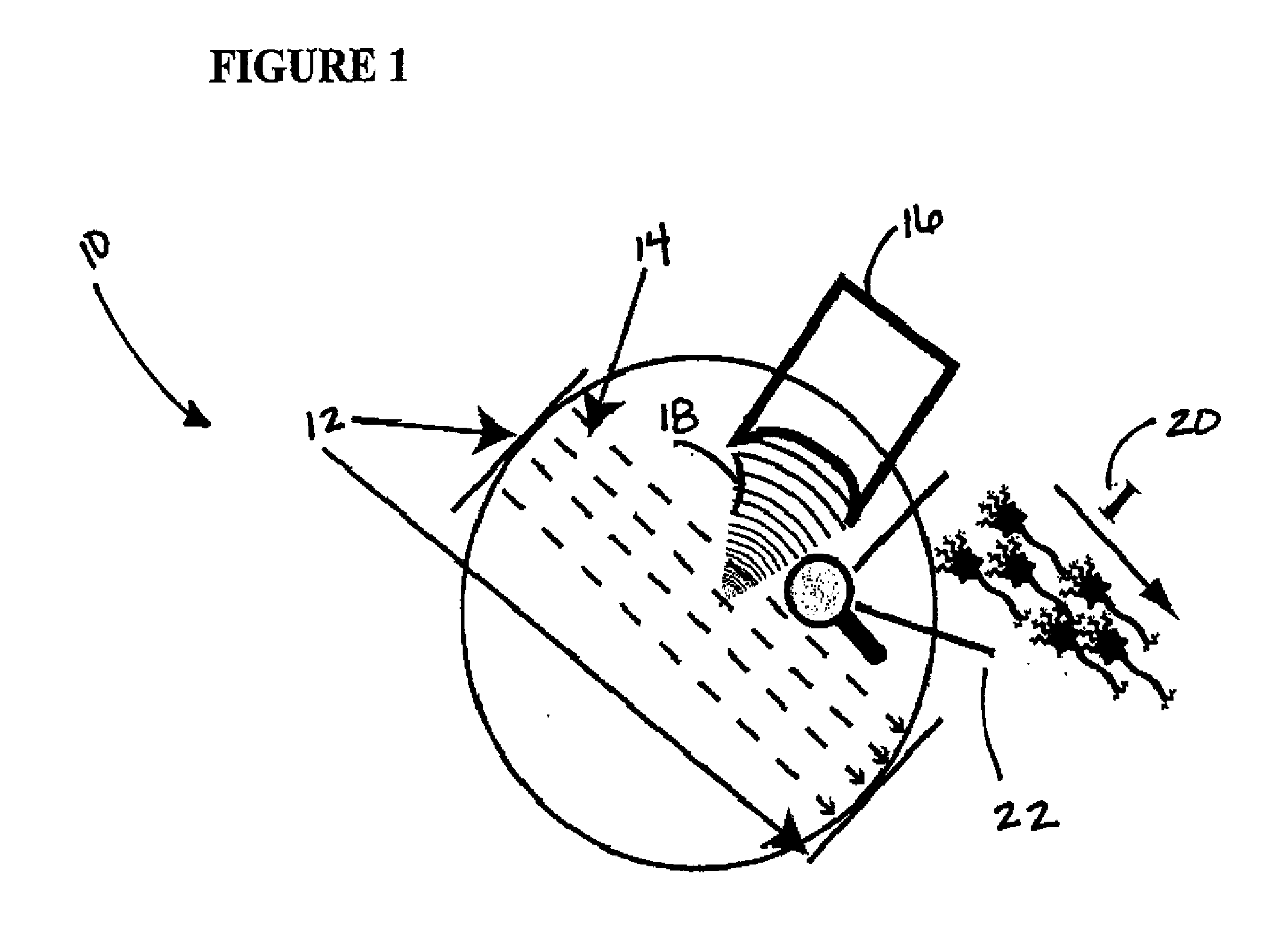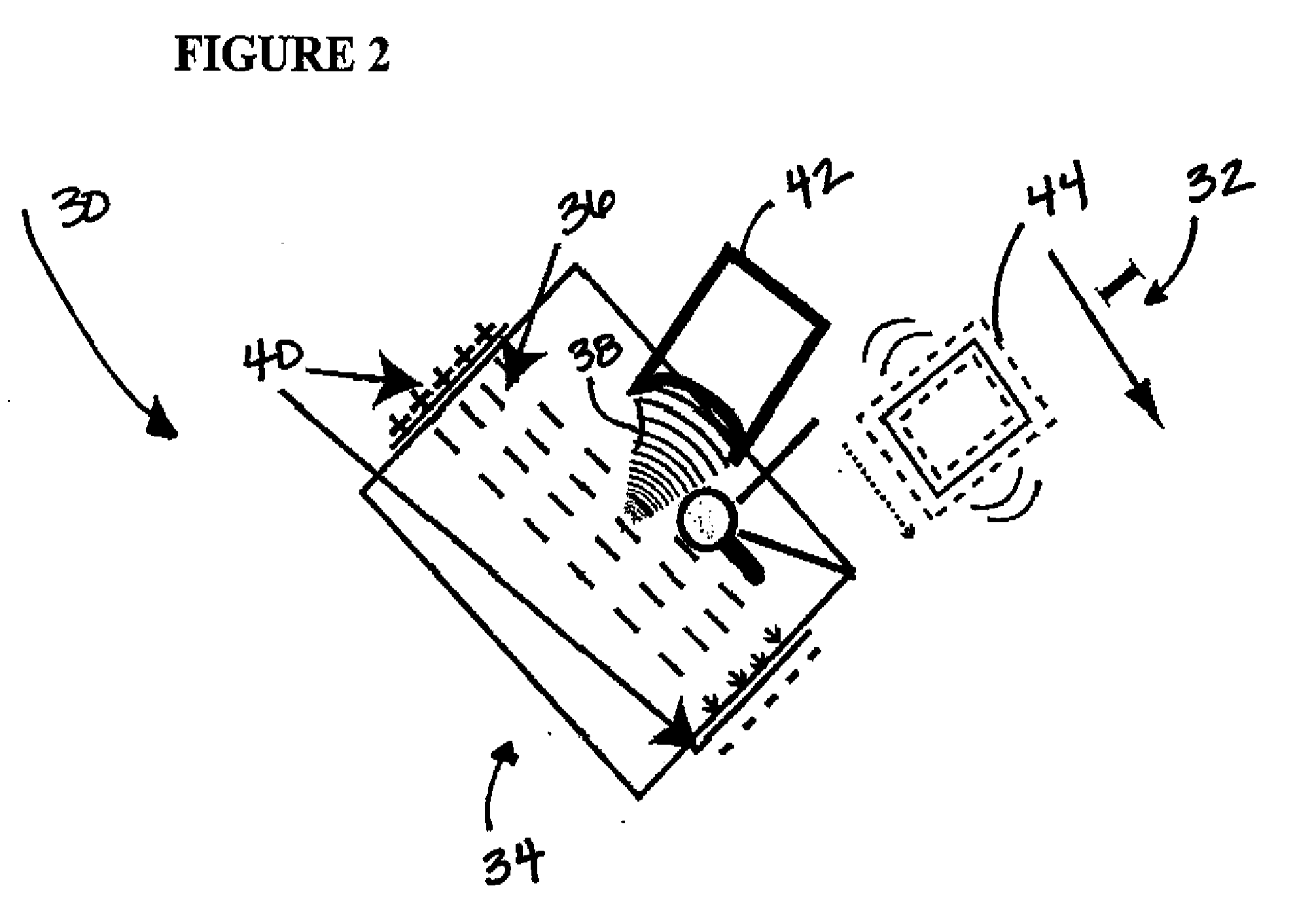Apparatus and method for stimulation of biological tissue
a biological tissue and apparatus technology, applied in the field of altering currents, can solve the problems of difficult and costly, easy to implement, and large morbidity
- Summary
- Abstract
- Description
- Claims
- Application Information
AI Technical Summary
Problems solved by technology
Method used
Image
Examples
Embodiment Construction
[0028] It is envisioned that the present disclosure may be used to stimulate biological tissue in-vivo comprising an electric source that is placed on the body to generate an electric field and a means for altering the permittivity of tissue relative to the electric field, whereby the alteration of the tissue permittivity relative to the electric field generates a displacement current in the tissue. The exemplary embodiments of the apparatuses and methods disclosed can be employed in the area of neural stimulation, where amplified, focused, direction altered, and / or attenuated currents could be used to alter neural activity via directly stimulating neurons, depolarizing neurons, hyperpolarizing neurons, modifying neural membrane potentials, altering the level of neural cell excitability, and / or altering the likelihood of a neural cell firing. Likewise, the method for stimulating biological tissue may also be employed in the area of muscular stimulation, including cardiac stimulation...
PUM
 Login to View More
Login to View More Abstract
Description
Claims
Application Information
 Login to View More
Login to View More - R&D
- Intellectual Property
- Life Sciences
- Materials
- Tech Scout
- Unparalleled Data Quality
- Higher Quality Content
- 60% Fewer Hallucinations
Browse by: Latest US Patents, China's latest patents, Technical Efficacy Thesaurus, Application Domain, Technology Topic, Popular Technical Reports.
© 2025 PatSnap. All rights reserved.Legal|Privacy policy|Modern Slavery Act Transparency Statement|Sitemap|About US| Contact US: help@patsnap.com



